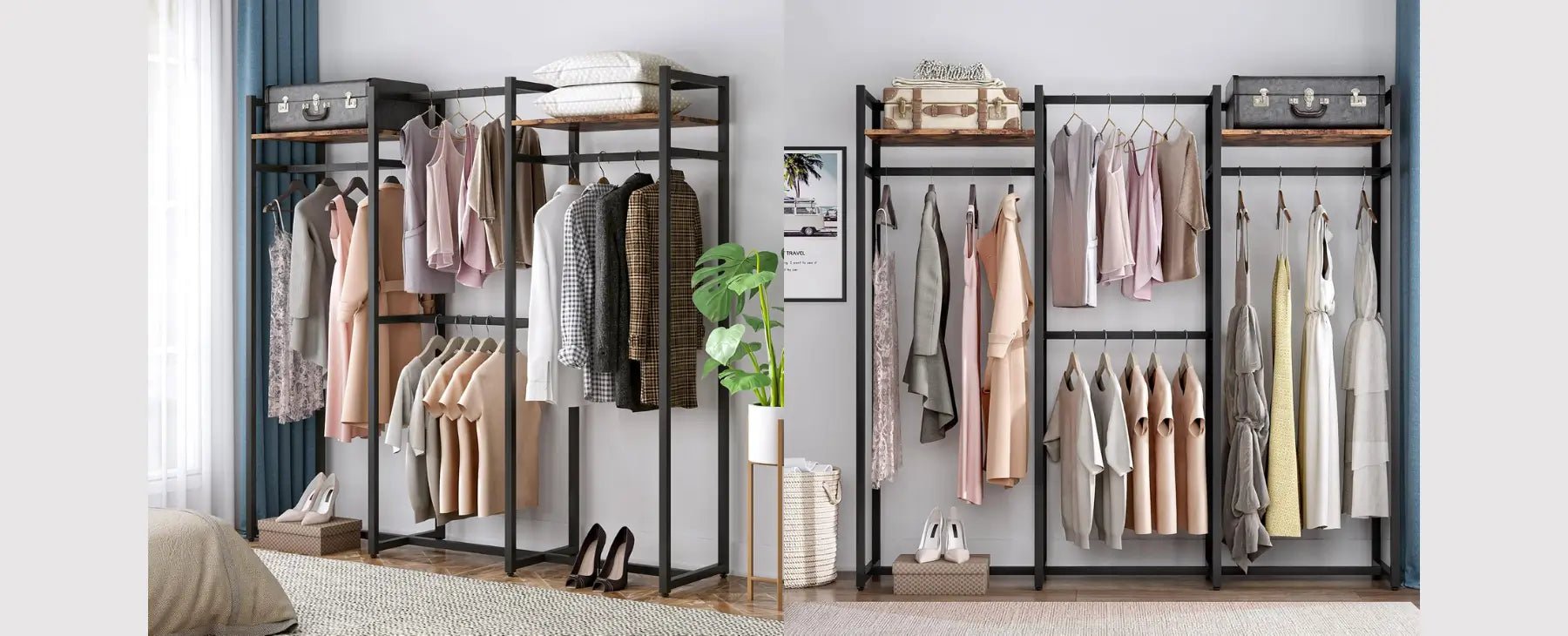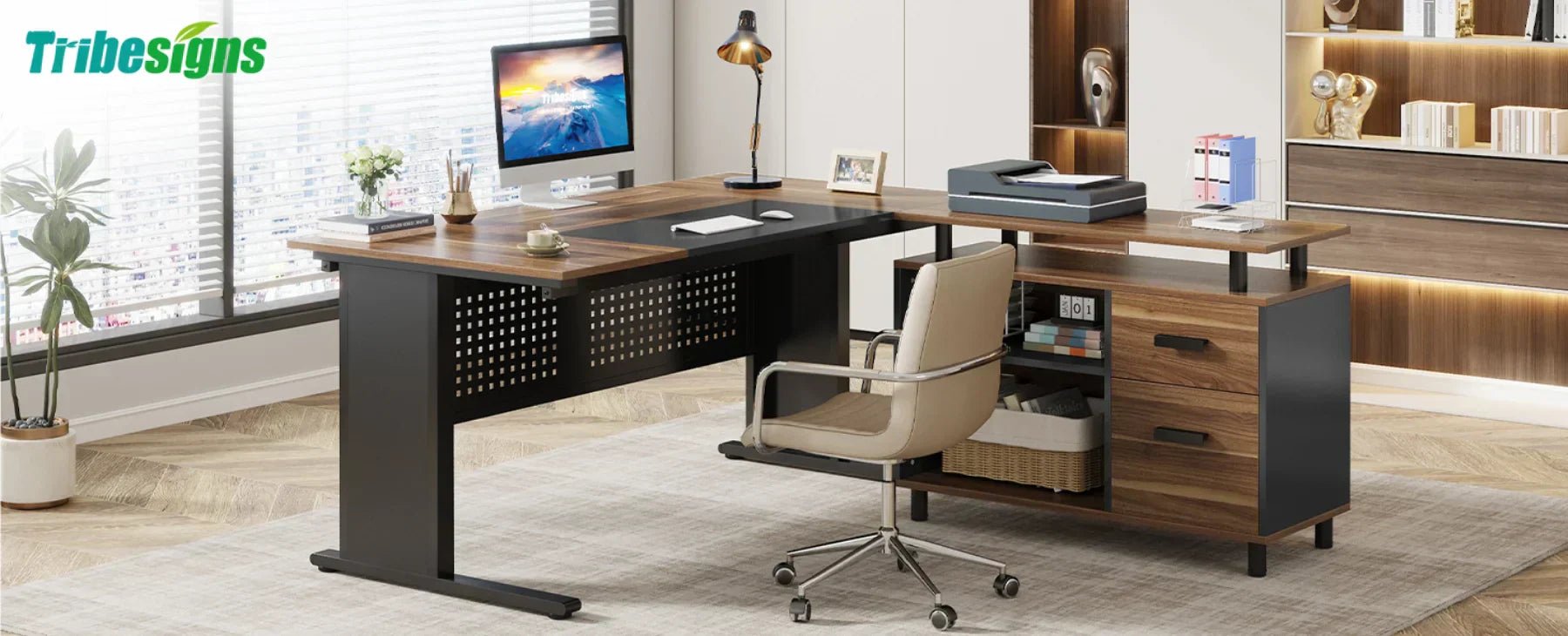Whether you have a small reach-in closet or a spacious walk-in closet, a well-organized clothing storage maximizes your available space and makes it easier to find what you need. The result? Less clutter, more clarity, and more time to do the important things.
Table of Contents
Empty Your Closet – Start Fresh
The first step in any successful closet organization project is to take everything out. Yes, every single item. It may seem like a daunting task, but trust us, this is the only way to truly assess what you have, what you need, and what’s just taking up space.
Start by clearing out all clothing, shoes, accessories, bags, and other items. Lay everything out on your bed or floor so you can see exactly what you're working with. This will give you a clear visual of how much stuff is in your closet and help you realize if you're holding onto things that no longer serve you.
Once the space is completely emptied, take a moment to assess the closet itself. Wipe down shelves, vacuum the floor, and clean out any dust or dirt. You’re creating a clean slate, and it's important to begin with a fresh, tidy environment.

Sort Items into Piles – Keep, Toss, Donate
With everything out of your closet, it’s time to make decisions about what stays and what goes. Creating distinct piles is an effective way to get organized. As you handle each item, ask yourself: When was the last time I wore this? Does it fit my current lifestyle? Is it in good condition? This will help you decide whether to keep, toss, or donate it.
Keep Pile: This is for items that you wear regularly and are in good condition. Think about the quality and practicality of each item. Does it fit well and match your current wardrobe? If so, it’s a keeper. Consider using slim, non-slip hangers to store these items, which saves space and keeps everything in place.
Toss Pile: These are items that are damaged, too worn out, or no longer serve any purpose. Torn clothing, shoes with holes, or accessories that no longer match your style should go in the toss pile. Remember, items that have lost their functionality aren’t doing you any favors by taking up precious closet space.
Donate Pile: If an item is still in good shape but you haven’t worn it in over a year or it no longer fits your style or size, it’s time to let it go. Donate items that could benefit someone else. Whether it’s a local charity or a consignment shop, passing on gently used clothes helps others while freeing up space in your closet.
As you go through this process, be honest with yourself. It can be tempting to hold onto things “just in case” or for sentimental reasons, but organizing your closet is about creating a practical, functional space. If it doesn’t fit, is out of style, or has no real use, it doesn’t belong in your closet.
Assess and Measure – Know Your Space
Before you can effectively organize your closet, you need to understand the space you're working with. This step is about being strategic—taking inventory not just of your wardrobe, but of the physical dimensions of your closet.
Start by measuring the height, width, and depth of your closet interior. Note the position of existing rods, shelves, and built-ins. Do you have a reach-in closet with limited depth? Or a walk-in space that could support a multi-zone system? Understanding these details helps you choose the right organizing tools—like stackable bins, adjustable shelving, or double hanging rods.
Next, take stock of your wardrobe categories: How many pairs of shoes do you own? How many long dresses need full-length hanging space? Are you storing bulky sweaters, handbags, or accessories? Write it all down. This inventory will guide your system design and ensure you don’t overbuy unnecessary organizers that won’t fit or serve your needs.
By assessing both your physical space and your storage needs, you’re laying the groundwork for a closet that functions efficiently and feels tailored to your lifestyle.
Plan & Organize – Set Up Your Closet System
Now it’s time to create an organizational system that maximizes your space and works with your daily routine. Think of your closet like a kitchen—you want to keep the most-used items easily accessible and store less-used ones higher up or further back.
Start with zoning: group similar items together—tops with tops, pants with pants, shoes with shoes. Use vertical space by installing extra shelves, over-the-door organizers, or tiered racks. Consider adding pull-out bins or drawer inserts for small items like belts, scarves, and undergarments.
For hanging clothes, use a mix of full-length and double-hang rods if space allows. Slim, uniform hangers not only look more cohesive but also save space and help maintain the shape of your garments. Clear or labeled bins are perfect for accessories or off-season items.

Put Things Back – Make It Work for You
With your system in place, it’s time to return everything to the closet—but this time with intention.
Place your most frequently worn pieces front and center. Work clothes, go-to jeans, and everyday shoes should be at eye level and easy to reach. Reserve higher shelves or less accessible areas for special-occasion outfits or seasonal gear.
As you return each item, ask yourself one last time: Is this something I use, love, or need? If not, set it aside for donation. The goal is not just to put things back, but to curate a space that makes your daily life easier.
Use dividers or storage bins to keep everything in its place. Label each zone if it helps you stay organized, and make adjustments as needed. A great closet system is flexible—it should evolve with you and your wardrobe.
The beauty of this final step is seeing the transformation. What was once cluttered and chaotic is now clean, functional, and designed to serve your everyday needs. And best of all? You'll actually enjoy opening your closet each day.
Tips for Maintaining an Organized Closet

Once you've gone through the effort of organizing your closet, maintaining that order is key to long-term success. Here are a few daily habits and strategies to keep your closet tidy without much effort.
Daily Upkeep: Spend a few minutes each day hanging up worn clothes and putting away shoes and accessories. Small daily habits prevent clutter from piling up and make tidying easier over time.
“One In, One Out” Rule: For every new item you buy, donate, sell, or toss an old one. This rule keeps your closet curated and prevents overcrowding.
Regular Seasonal Review: At the start of each season, pack away off-season clothes and be honest about items you haven't worn. Seasonal purging keeps your closet organized and eliminates unnecessary clutter.
Reverse Hanger Trick: Hang all clothes backward at the start of the season. At the end of the season, any items still hung backward haven’t been worn and can be donated or sold.
Invest in Quality Storage: Use strong, uniform hangers and stackable bins to keep your closet organized. Quality storage solutions make it easier to maintain order and protect your clothes.
FAQ
Which Clothes to Hang or Fold?
Hang clothes that wrinkle easily or need to maintain their shape, such as:
- Dresses
- Suits
- Blouses and shirts
- Jackets and coats
- Trousers (especially those with pleats)
Fold clothes that are less prone to wrinkling or don’t need to hang, such as:
- Sweaters (to avoid stretching out the fabric)
- T-shirts and casual tops
- Jeans and leggings
- Shorts
- Activewear
Using slim, velvet hangers for delicate fabrics helps save space and keeps everything neat. Make sure to hang items with enough space between them to avoid overcrowding and wrinkles.
What to Put on Top Shelf of Closet?
The top shelf of your closet is a great place to store items you don’t need every day but still want to keep organized and accessible. Consider storing:
- Seasonal items (like holiday decorations or winter coats)
- Extra bedding or linens
- Luggage and travel bags
- Storage bins for off-season clothing, shoes, or accessories
- Keepsakes and items that are infrequently used but important
Because the top shelf is usually higher up, use bins or baskets to keep everything in one place and label them for easy access.
What is The 12-12-12 Rule For Decluttering?
The 12-12-12 rule is a decluttering challenge that involves identifying 12 items to discard, 12 to donate, and 12 to keep.
Conclusion
If you're looking for an effective way to organize your shoes and other essentials, Tribesigns has the perfect solution. Our closet organizers with shelves and drawers are designed to stand independently, making them ideal for small spaces. With ample storage and easy access, you'll be able to quickly find what you need while keeping everything neatly in place.
Shop now to transform your closet into a clutter-free, organized space with Tribesigns!



